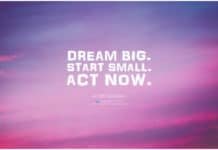
Intro:
A company’s strength and progress in the competitive field of business have become determined by the quality of experiences it offers. As another year comes to an end, it’s clear that strong financials by themselves don’t fully convey the state of a business.
The experiences offered to consumers, customers, and employees—collectively referred to as CX, UX, and EX—are instead highlighted. These three factors have the power to propel a business’s growth into the spotlight or darkness
Excellent experiences are what separate growing companies from those that fade completely. At the end of the year, your bottom line doesn’t mean much if the experiences are poor quality.
Three factors—customer experience (CX), user experience (UX), and employee experience (EX)—have the power to make or break a business’s growth in today’s connected environment.
If you get these right, you’ll be on a good track. If you do things incorrectly, you run the risk of being just another Warning story.
Despite having solid financials, many businesses have failed throughout the years due to poor experience management.
The most successful brands are aware that how consumers perceive their products and how workers feel about their work environments can make or damage a business’s growth.
Experiential Excellence
Have you heard the well-known tale of the Nordstrom tires? A customer entered a Nordstrom store to return a pair of tires—yes, wheels. The twist? You are aware that Nordstrom doesn’t even carry tires if you have ever shopped there.
And you know what? The employee’s unchanging acceptance of the return demonstrates Nordstrom’s dedication to providing excellent customer service.
This story, which I first heard in management school, has been told countless times because it defines the fundamentals of a fantastic customer experience.
The smooth blending of CX, UX, and EX—rather than just the customer service component—is what gives this story its great impact.

The three-part series of Experiences
The experience of the customer (CX):
Customer experience (CX) is fundamentally about how consumers feel about their experiences with your brand. It includes everything from customer service to after-sales support and marketing.
Even though the consumer was in a very unusual situation, the CX in the Nordstrom example was excellent—the customer departed feeling acknowledged.
The user experience (UX):
While most folks may think of UX as just digital, it includes all user interactions with a product or service. It’s about the fullness of the experience, whether in a brick-and-mortar setting or virtually.
When customers feel understood and valued across all these touchpoints, they don’t just return—they practically become brand Representatives.
When you consider how competitive the business growth landscape is, a holistic approach to user experience isn’t just a nice-to-have; it’s what separates the brilliant from the basic.
The employee experience (EX):
EX is often overlooked, yet it’s essential for how employees feel about the journey within the company.
EX acts as the through line that connects employees to the company’s values and mission while also serving as a throughput that guides them through the entire employee lifecycle—from attraction and hiring to onboarding, development, engagement, advancement, and retention.
When employee engagement is strong, it empowers team members to go above and beyond in Setting priorities, and customer satisfaction. This positive EX directly boosts CX, creating a cycle of success that benefits everyone.
The coming together of Experiences
There is a strong flywheel effect when these three dimensions line up. Employees who are content and engaged are more inclined to go above and above for clients. Everyone can engage with the business more easily when user interfaces and procedures are well-designed.
Positive feedback from happy customers boosts staff morale and enhances the user experience.
This convergence builds a stronger business model. Companies that excel in all three areas are better outfitted to handle market ups and downs, economic challenges, and changing consumer preferences. They create a reservoir of goodwill that helps them through tough times.
Designing for Experience
-
Put empathy first in all of your interactions, whether they are with clients, staff, or users.
-
Invest in technologies and training that enable staff to provide outstanding experiences
-
Continue to collect and respond to input from all parties, including employee engagement surveys and NPS.
-
Encourage an environment where trying new things and learning from mistakes are valued.
-
To establish “one voice” from digital platforms to physical venues, make sure that all touchpoints are consistent.
Businesses that understand how CX, UX, and EX are interconnected will be the ones that succeed in the experience-driven economy.
- They will be the Nordstroms of their respective sectors—businesses that generate engagement, foster loyalty, and maintain success by sharing their remarkable experiences in business growth strategy.









































